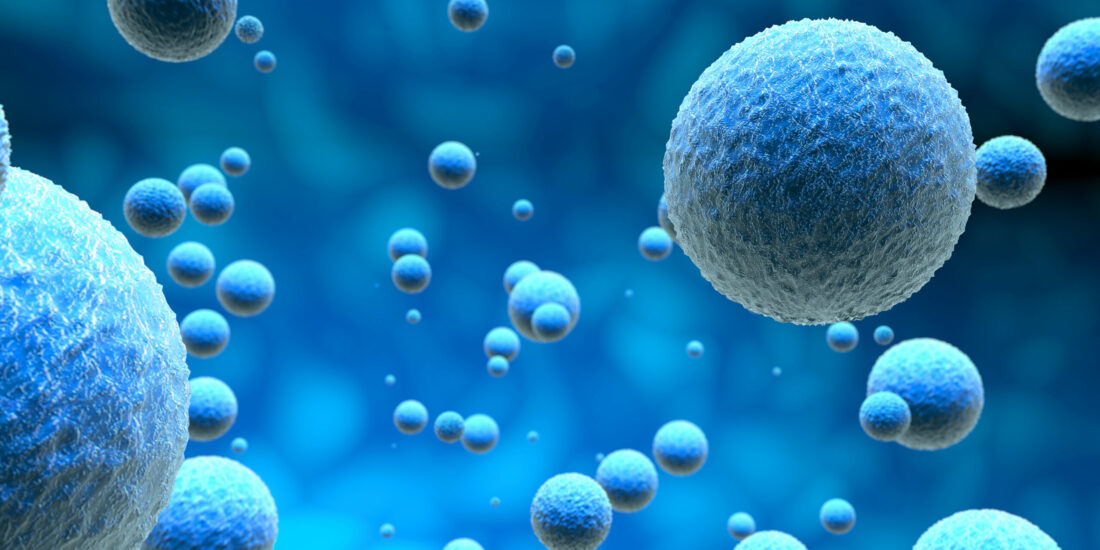Role of the Ca2+ channel α2δ-1 auxiliary subunit in proliferation and migration of human glioblastoma cells
By Miriam Fernández-Gallardo, Alejandra Corzo-Lopez, David Muñoz-Herrera, Margarita Leyva-Leyva, Ricardo González-Ramírez, Alejandro Sandoval, Rodolfo Delgado-Lezama, Eduardo Monjaraz, and Ricardo Felix Excerpt from the article published in PLoS ONE 17(12): e0279186, December 15, 2022, DOI: https://doi.org/10.1371/journal.pone.0279186 Editor’s Highlights Abstract The overexpression of α2δ-1 is related to the development and degree of malignancy of diverse types of […]
Continue ReadingImpaired migratory phenotype of CD4+ T cells in Parkinson’s disease
By Dejan Mamula, Shervin Khosousi, Yachao He, Vesna Lazarevic, and Per Svenningsson Excerpt from the article published in NPJ Parkinsons Dis. 8, 171, 10 December 2022. DOI: https://doi.org/10.1038/s41531-022-00438-0 Editor’s Highlights Abstract Dysfunctions in the immune system appear implicated in both disease onset and progression of Parkinson’s disease (PD). Neurodegeneration observed in the brain of PD patients has […]
Continue ReadingExcessive proteostasis contributes to pathology in fragile X syndrome
By Susana R. Louros, Sang S. Seo, Beatriz Maio, Cristina Martinez-Gonzalez, Miguel A. Gonzalez-Lozano, Melania Muscas, Nick C. Verity, Jimi C. Wills, Ka Wan Li, Matthew F. Nolan, and Emily K. Osterweil Excerpt from the article published in Neuron, 9 December 2022, ISSN 0896-6273,DOI: https://doi.org/10.1016/j.neuron.2022.11.012. Editor’s Highlights Authors’ Highlights Summary In fragile X syndrome (FX), […]
Continue ReadingHevin/Sparcl1 drives pathological pain through spinal cord astrocyte and NMDA receptor signaling
By Gang Chen, Jing Xu, Hao Luo, Xin Luo, Sandeep K. Singh, Juan J. Ramirez, Michael L. James, Joseph P. Mathew, Miles Berger, Cagla Eroglu, and Ru-Rong Ji Excerpt from the article published in JCI Insight, Volume 7, Issue 23 on December 8, 2022, e161028. DOI: https://doi.org/10.1172/jci.insight.161028. Editor’s Highlights Abstract High endothelial venule protein/SPARC-like 1 […]
Continue ReadingIncorporation of a selective sigma-2 receptor ligand enhances uptake of liposomes by multiple cancer cells
By Yifei Zhang, Yixian Huang, Peng Zhang, Xiang Gao, Robert B Gibbs, and Song Li Excerpt from the article published in International Journal of Nanomedicine, 7: 4473-4485, 07 Dec 2022, DOI: 10.2147/IJN.S31981 Editor’s Highlights Abstract Background: The sigma-2 receptor is an attractive target for tumor imaging and targeted therapy because it is overexpressed in multiple types of solid tumors, […]
Continue ReadingThe sigma-1 receptor curtails endogenous opioid analgesia during sensitization of TRPV1 nociceptors
By M. Carmen Ruiz-Cantero, Elsa Cortés-Montero, Aakanksha Jain, Ángeles Montilla-García, Inmaculada Bravo-Caparrós, Jaehoon Shim, Pilar Sánchez-Blázquez, Clifford J. Woolf, José M. Baeyens, and Enrique J. Cobos Excerpt from the article published in British Journal of Pharmacology, 1– 20, 07 December 2022, DOI: https://doi.org/10.1111/bph.16003 Editor’s Highlights Abstract Background and Purpose: Peripheral sensitization contributes to pathological pain. While prostaglandin […]
Continue ReadingNeuroinflammation is independently associated with brain network dysfunction in Alzheimer’s disease
By Fangda Leng, Rainer Hinz, Steve Gentleman, Adam Hampshire, Melanie Dani, David J. Brooks, and Paul Edison Excerpt from the article published in Molecular Psychiatry, 06 December 2022. DOI: https://doi.org/10.1038/s41380-022-01878-z Editor’s Highlights Abstract Brain network dysfunction is increasingly recognised in Alzheimer’s disease (AD). However, the causes of brain connectivity disruption are still poorly understood. Recently, […]
Continue ReadingReduced excitatory neuron activity and interneuron-type-specific deficits in a mouse model of Alzheimer’s disease
By Moustafa Algamal, Alyssa N. Russ, Morgan R. Miller, Steven S. Hou, Megi Maci, Leon P. Munting, Qiuchen Zhao, Dmitry Gerashchenko, Brian J. Bacskai, and Ksenia V. Kastanenka Excerpt from the article published in Communications Biology 5, 1323, 02 December 2022. DOI: https://doi.org/10.1038/s42003-022-04268-x Editor’s Highlights Abstract Alzheimer’s disease (AD) is characterized by progressive memory loss […]
Continue Readingσ2R/TMEM97 in retinal ganglion cell degeneration
By Hua Wang, Zhiyou Peng, Yiwen Li, James J. Sahn, Timothy R. Hodges, Tsung-Han Chou, Qiong Liu, Xuezhi Zhou, Shuliang Jiao, Vittorio Porciatti, Daniel J. Liebl, Stephen F. Martin, and Rong Wen Excerpt from the article published in Scientific Reports 12, 20753, 01 December 2022, DOI: https://doi.org/10.1038/s41598-022-24537-3 Editor’s Highlights Abstract The sigma 2 receptor (σ2R) […]
Continue ReadingA postmortem study suggests a revision of the dual-hit hypothesis of Parkinson’s disease
By Per Borghammer, Mie Kristine Just, Jacob Horsager, Casper Skjærbæk, Anna Raunio, Eloise H. Kok, Sara Savola, Shigeo Murayama, Yuko Saito, Liisa Myllykangas, and Nathalie Van Den Berge Excerpt from the article published in npj-Parkinson’s Disease. 8, 166, 30 November 2022, DOI: https://doi.org/10.1038/s41531-022-00436-2 Editor’s Highlights Abstract The dual-hit hypothesis of Parkinson’s disease (PD) originally postulated that […]
Continue Reading









